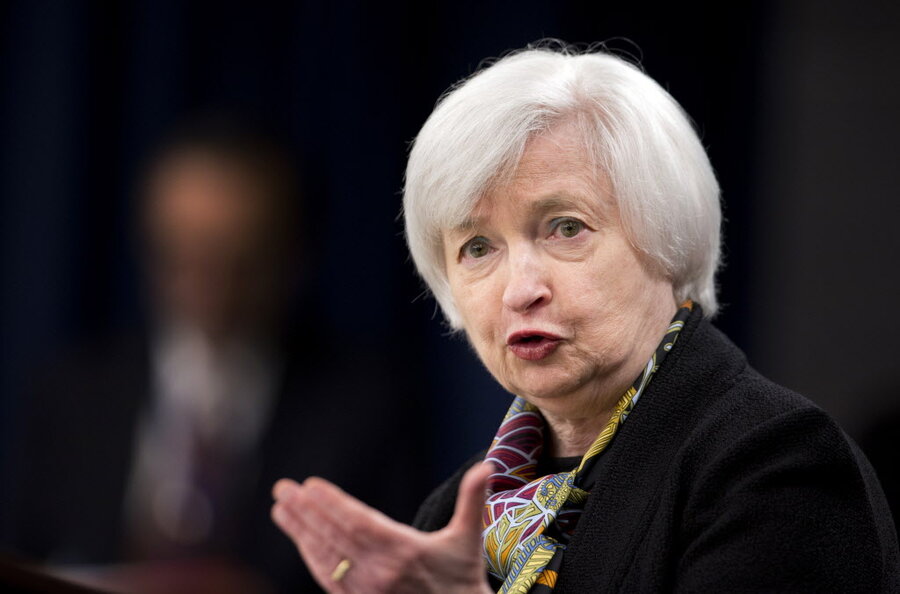Federal Reserve: better wages, low unemployment fueling US economic growth
Loading...
Things are still on the up and up for the US economy.
According to a report released Wednesday by the Federal Reserve, the economy continued to grow in the early part of the year, punctuated by a modest rise in consumer spending and increasing wages.
That report, known as the Beige Book is a survey of economic conditions in the 12 Federal Reserve "Districts" located around the United States. It's published by the Fed eight times per year. Wednesday's edition expressed cautious optimism that the modest economic growth seen from February through early April may continue.
“Most Districts said that economic growth was in the modest to moderate range and that contacts expected growth would remain in that range going forward,” the report states.
Economic growth was helped in part by consumer spending, which continued its upward trajectory during the early part of the year. The report cites low fuel prices as a contributing factor that encouraged consumers to get out and spend more. The lower cost of gasoline also prompted an increase in business and leisure travel to places like Atlanta, Boston, and Chicago.
But not every district was happy about that trend. Cleveland and Dallas both reported to the Beige Book that low energy prices were impacting the financial standing of their energy firms.
The labor market, meanwhile, continued to firm up, with job gains reported in every district but Cleveland. The manufacturing, retail, finance, and service industries all added jobs. Several Districts also reported an increase in hires for the healthcare industry. This is consistent with projections for occupational growth from the Bureau of Labor Statistics (BLS). The BLS projects that retail, trades, and finance will be among those fields with the most job growth in the next ten years, dominated by hires in the healthcare industry.
Wages also lent a helping hand to the economy, rising in every Federal Reserve district but Atlanta. While wages weren’t soaring astronomically high, they did experience mild to moderate gains throughout the other eleven districts. But not every rise in wages correlates to higher consumer spending. In recent months, many Americans have chosen to save more of that extra cash instead.
The US Commerce Department reported that retail sales fell by 0.3 percent in March, as consumers pulled back on purchases of cars and other items. That points to a more nuanced picture of economic growth than the rosy one given in the Beige Book.
Some districts reported having to raise their wages for both low-skill and highly skilled positions in order to attract workers, despite labor shortages. In St. Louis, Boston, and Cleveland, information technology and skilled construction positions both experienced vigorous wage growth, also consistent with BLS projections for these industries.
Because economic growth has been so strong in the first part of the year, the Federal Reserve has expressed caution about raising interest rates. In December 2015, the Fed raised rates for the first time since the financial crisis, citing job growth as a major reason. Since then, the Reserve has been more hesitant, saying that it will likely raise rates only one or two more times this year. Many economic analysts anticipate rates to go unchanged at the Fed’s April meeting but rise in June.






